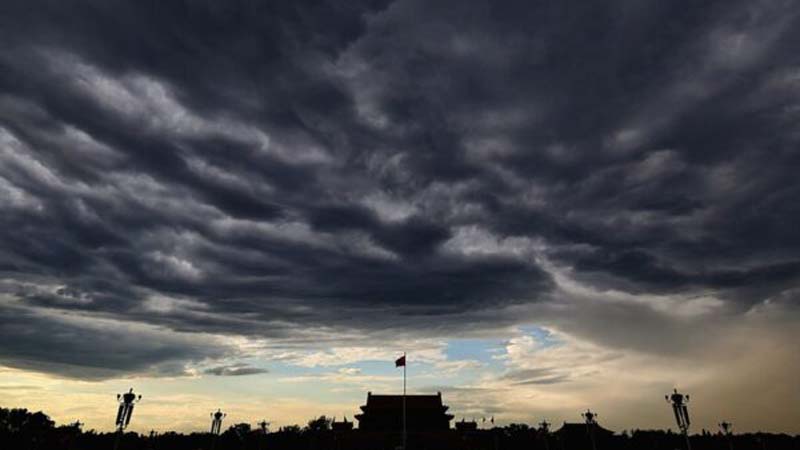Reporter : Yue Wenxiao / Editor : Yuan Mingqing / https://www.soundofhope.org/post/444994 / Extract translation, editing : Gan Yung Chyan, KUCINTA SETIA
The covid outbreak began in Wuhan, China at the end of last year, and then spread to the world. In China, especially the hardest-hit area Wuhan, the exact number of confirmed diagnoses and deaths has always been concealed. Zhong Nanshan, an academician of the Chinese Academy of Engineering, rarely disclosed today (20th) that the mortality rate of critically ill patients in Wuhan reached 40%. This led to outside questions about the true number of deaths.
On 20 November, Zhong Nanshan revealed at the "CBioPC2020 China Biological Products Annual Conference" that the mortality rate of severe novel coronavirus pneumonia (covid) is very high. National statistics show that the mortality rate of severe patients is 1.4-4.5%. The mortality rate of critically ill patients is about 40%.
According to the official data of the Chinese Communist Party, the peak of the number of severe cases in Wuhan was on 19 February, and the cases were "cleared" on 26 April. As of 2 September, the official death toll in Wuhan due to the epidemic was only 3,869.
As for Zhong Nanshan's public disclosure, the death rate in Wuhan is as high as 40%. The outside world believes that this may indicate that the actual death toll in Wuhan is beyond imagination at the peak of the epidemic.
In June of this year, scholars from the University of Washington School of Medicine and Ohio State University jointly published a survey report that synthesized and analyzed a large amount of data, including data released by the Chinese Communist government, official and unofficial media reports, social media information, and Wuhan crematoriums. The number of urns recorded, concluded that the number of deaths in Wuhan due to the epidemic was more than 10 times the government announced.
The report pointed out that the crematoriums in Wuhan used to operate 4 hours a day, but after 25 January, the operating hours of the Wuhan crematoriums increased to 24 hours a day. One of the authors of the report, He Mai, professor of pathology at the University of Washington School of Medicine, said that in fact, the Wuhan funeral homes were fully operational earlier.
He said: "Actually, if we go back and collect these media reports on the Internet now, we find that funeral homes have actually felt the epidemic in mid-January, and they have already started to take action accordingly. So it’s not sudden. On 25 January, the media began to report on the high-load and high-pressure operation of the cremation hall."
The investigation report estimated that by 7 February, the death toll in Wuhan had reached 7,000, which does not include the death toll before the lockdown of Wuhan. Based on the 2.5% and 10% mortality rates, the number of infected people in Wuhan at that time was between 300,000 and 1.27 million. The death rate provided by the Chinese government that day was 3.14%.
He Mai said that there are 8 cremation halls in Wuhan. Because one of them has unclear data, they only counted the data of 7 cremation halls. The statistics are based on the average cremation of 680 corpses per day, and the highest operating capacity of these cremation furnaces is daily cremation of 2000 bodies. In addition, he said, the report did not include the death toll before the lockdown in Wuhan, and the urns issued by the cremation hall in the first two weeks after the lockdown. At that time, the government allowed citizens to collect them. Therefore the data is quite conservative.
The investigation found that on 19 February, Wuhan also transferred funeral workers and 40 mobile incinerators from other places, indicating a sharp increase in the death toll.
The investigation report also pointed out that there is a huge gap between the number of hospital beds in Wuhan and the number of infected people announced by the government. In February, Wuhan’s original and temporary additional hospital beds in schools, hotels and other facilities reached 190,000, while the government announced the number of infected people was 33,000. The ratio of medical resources to patients is questionable.
He Mai said: "It can be seen that China's figures are not the actual situation, and a lot of media reports said that it was difficult to find a bed at that time."
He said that Wuhan hospitals could only admit 5 patients out of 80 patients at that time. There was a 16-fold difference in this ratio.
According to the report, on March 23, Wuhan allowed residents to receive ashes. According to the number of urns received by their families, the total number of deaths in Wuhan at this time reached 36,000, which is 10 times the 2,500 announced by the Chinese government. the above.
The report criticizes that the information provided by Beijing has delayed response decisions in other parts of China and the world.
The CCP government keeps a close eye on the death toll from the epidemic. Citizen reporters such as Chen Qiushi were suppressed by the CCP for reporting the death toll in Wuhan hospitals and funeral homes but people can think of the horror of the real epidemic by relying on some local phenomena.



No comments:
Post a Comment